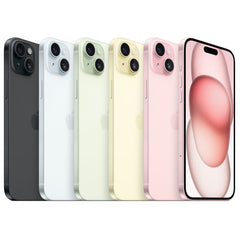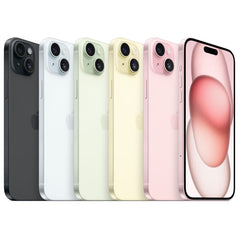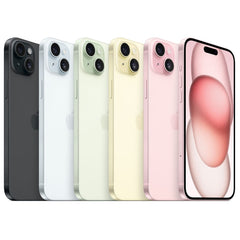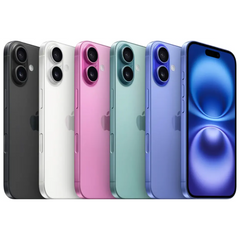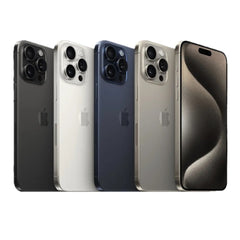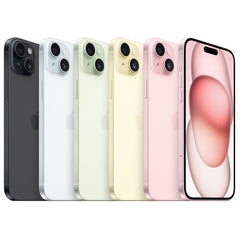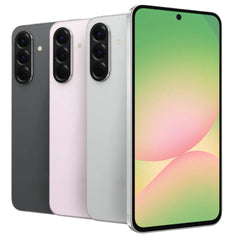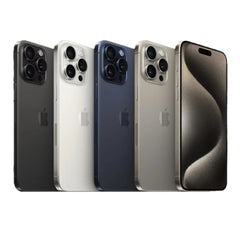Find Devices That Fit Your Needs

A Guide to Checking Carrier Compatibility for Your Mobile Device
How to Check If Your Phone Works on Any Carrier?
When purchasing a new mobile device or considering a switch to a different carrier, it's important to ensure that your device is compatible with the network. Carrier compatibility determines whether your device can access voice, text, and data services on a specific network, including the latest 5G speeds. To help you navigate this process, we've put together a guide on how to check carrier compatibility for your mobile device. By following these steps, you can avoid any potential compatibility issues and enjoy a seamless mobile experience.
Step 1: Determine Your Device's Network Technology
The first step in checking carrier compatibility is to determine the network technology supported by your device. Mobile networks use different technologies, such as GSM, CDMA (though less common now, especially for newer devices), LTE (including various bands), and the latest 5G (with different sub-6GHz and mmWave bands). Most modern smartphones support multiple network technologies, but it's essential to know which ones your device is compatible with, especially regarding 5G. You can find this information in your device's specifications (usually on the manufacturer's website) or by contacting the manufacturer directly. Pay attention to the specific LTE and 5G bands supported by your device.
Step 2: Identify Your Device's Model and IMEI/MEID
To check carrier compatibility, you'll need to know the specific model of your device. This information is typically found in the device settings (e.g., under "About phone" or "General") or on the manufacturer's website. Knowing your device's exact model is crucial for researching its compatibility with different carriers. Additionally, having your device's IMEI (for GSM devices) or MEID/ESN (for some CDMA devices, though less relevant now) can be helpful when using online compatibility checkers or speaking with carriers. You can usually find your IMEI by dialing *#06# on your phone.
Step 3: Research Carrier Compatibility
Once you have identified your device’s network technology, specific model, and potentially your IMEI/MEID, it’s time to research carrier compatibility. Visit the websites of major carriers like AT&T, T-Mobile, Verizon, and their respective prepaid brands (e.g., Cricket Wireless for AT&T, Metro by T-Mobile, Visible for Verizon). Many carriers have a dedicated section on their website where you can enter your device information (model or IMEI/MEID) to check its compatibility with their network, including 5G support. These tools will inform you if your device is supported, which services it can access (including 5G and eSIM if applicable), and any specific requirements or limitations. For example, you can use these tools to check if your iPhone, Samsung Galaxy, Google Pixel, or any phone is compatible with your desired carrier, or if you need to unlock it or use a specific type of SIM card (physical SIM or eSIM).
Step 4: Consult with Your Current or Potential Carrier
If you are already using a specific carrier and want to switch to a different one, it's always a good idea to contact both your current and potential carriers directly to inquire about compatibility. Reach out to carriers like AT&T, T-Mobile, Verizon, and their prepaid brands. They can provide the most up-to-date and detailed information about their network technology, supported frequency bands (especially for 5G), and whether your device will work on their network, including eSIM activation if your device supports it. Be prepared to provide your device's model and IMEI/MEID to the carrier representative for accurate guidance. Ask specifically about 5G compatibility and eSIM support if those are important to you.
Step 5: Consider Unlocked Devices and eSIM
Unlocked devices offer greater flexibility in terms of carrier compatibility. These devices are not tied to a specific carrier and can work with different networks as long as they support the required network technology and frequency bands. If you are purchasing a new device or a renewed phone, consider opting for an unlocked version. Unlocked devices are available directly from manufacturers or reputable retailers and give you the freedom to choose the carrier that best suits your needs.
Furthermore, consider devices with eSIM (embedded SIM) capability. eSIMs offer even greater flexibility as you can often switch carriers or add new lines digitally without needing a physical SIM card. Check if your device and desired carrier support eSIM.
Conclusion
Checking carrier compatibility is crucial when purchasing a new device or considering a switch to a different carrier. Whether you are buying a new phone or a renewed phone, you need to make sure that it will work on the network of your choice, including accessing the latest 5G speeds and potentially utilizing eSIM technology. By following these steps and conducting thorough research, you can ensure that your device is compatible with your desired network. Remember to determine your device's network technology (including 5G bands), identify its model and IMEI/MEID, research carrier compatibility using online tools or carrier websites, and consult with carriers like AT&T, T-Mobile, Verizon, and their prepaid brands directly for specific information. With this knowledge, you can make informed decisions and enjoy a seamless mobile experience on a carrier that meets your needs.














